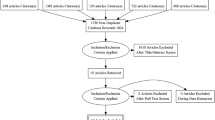Abstract.
Non-ionic dimers induce less diuresis than non-ionic monomers, resulting in increased opacification of the urinary tract in intravenous urography. This trial compared the diagnostic efficacy of iodixanol and iopromide in patients with macroscopic haematuria. One hundred consecutive patients with normal renal function and macroscopic haematuria entered a double blind, comparative, randomised, parallel trial. Contrast media were given with bolus injection in doses of 300 mgI/kg b.w. Radiographs were blindly evaluated by three radiologists who analysed different parameters (calyceal density and filling, papillary blush detection, delineation of collecting ducts, renal pelvis opacification, visualisation of ureters, bladder density, bladder distention) and estimated the diagnostic confidence (whether abnormal findings were definitely absent, probably absent, doubtful, probably present or certainly present). Radiological diagnoses were compared with final diagnoses. Results were summarised as the ratio of the odds of having a worse performance of iopromide vs iodixanol. Iodixanol showed a significantly better calyceal density and filling [odds ratio (OR): 1.96; 95% confidence interval (CI): 1.60–2.41], a significantly better pelvis opacification (OR 2.91; CI 2.02–4.18) and a significantly more frequent papillary blush detection (OR 1.95; CI 1.29–2.95). Iopromide showed a significantly better ureteral visualisation (OR 0.67; CI 0.48–0.92) and a significantly higher bladder distention (OR 0.59; CI 0.36–0.99). Iodixanol allowed a significantly higher diagnostic confidence as to calyceal evaluation (OR 1.35; CI 1.01–1.79). No significant differences were found with regard to other parameters. The results confirmed theoretical expectations. The higher opacification provided by iodixanol allowed better results and a higher diagnostic confidence in the upper excretory pathway.
Similar content being viewed by others
Author information
Authors and Affiliations
Additional information
Electronic Publication
Rights and permissions
About this article
Cite this article
Stacul, .F., Cova, .M., Pravato, .M. et al. Comparison between the efficacy of dimeric and monomeric non-ionic contrast media (iodixanol vs iopromide) in urography in patients with macroscopic haematuria. Eur Radiol 13, 810–814 (2003). https://doi.org/10.1007/s00330-002-1563-3
Received:
Revised:
Accepted:
Issue Date:
DOI: https://doi.org/10.1007/s00330-002-1563-3




